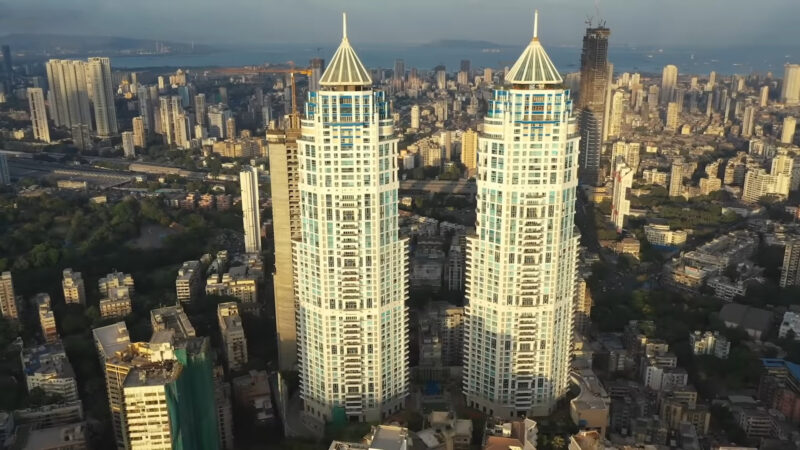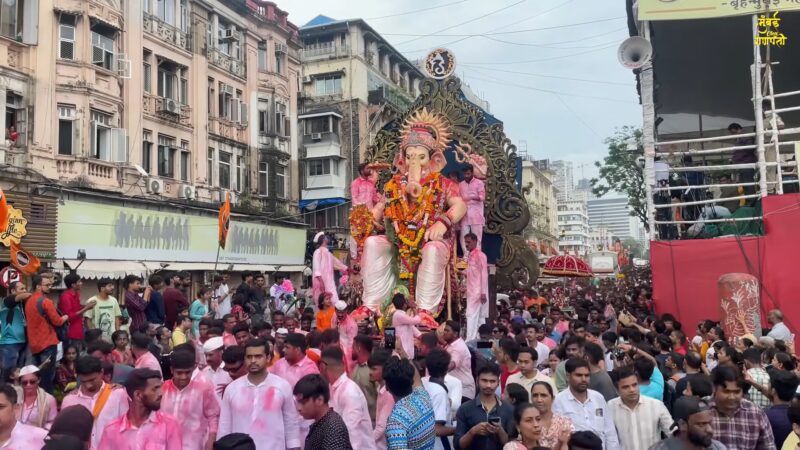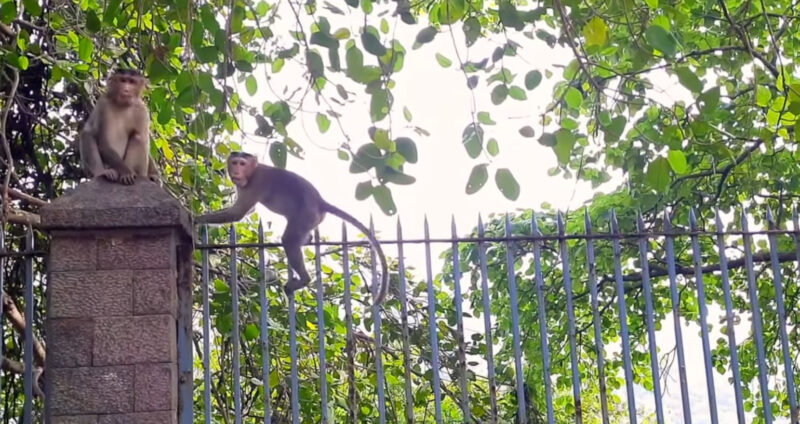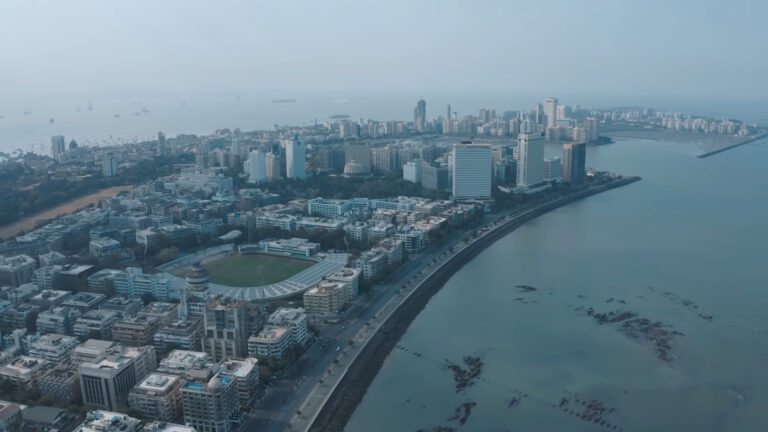Imagine a city blanketed in a soft layer of snow, where kids build snowmen and adults enjoy a cozy evening by the fireplace, sipping hot cocoa. Snow has a certain allure that captures the imagination, evoking a sense of wonder and tranquility.
But what about Mumbai? This blog post talks about the climate, geography, and cultural aspects of Mumbai to explore whether the city ever gets to experience this wintry phenomenon.
Get ready to uncover the intricate details that make Mumbai a city unlike any other, snow or without it
Mumbai’s Climate in a Nutshell

To get to the bottom of whether or not it snows in Mumbai, we first have to understand the climate of the city. Mumbai experiences a tropical climate, which is significantly different from areas where snow is common.
Let’s break down the specifics of Mumbai’s weather.
The Tropical Wet and Dry Climate
Mumbai is categorized under the Köppen climate classification as having a tropical wet and dry climate. This means that the city typically experiences two main seasons: a wet monsoon season and a dry season.
With temperatures ranging between 20°C (68°F) and 32°C (89.6°F), snow is not just uncommon—it’s practically impossible given the existing weather conditions.
Factors Influencing Mumbai’s Climate
- Proximity to the Arabian Sea: The close proximity to the sea helps regulate Mumbai’s temperatures, ensuring they don’t fall to a level where snowfall could occur.
- Altitude: Mumbai is largely at sea level, which means the air pressure doesn’t contribute to colder temperatures. Higher altitudes often experience colder climates conducive to snowfall, but that’s not the case here.
- Air Currents: Warm air currents from the Equator pass through Mumbai, keeping the climate temperate all year round. Cold winds necessary for snowfall do not reach this region.
What Makes Snow Possible?
Now that we’ve established that Mumbai’s climate is not conducive to snow, it’s essential to understand what conditions are necessary for it to form. The factors that make snow possible are fascinating in their own right and help explain why Mumbai misses out on this icy phenomenon.
Temperature and Humidity Conditions
For snow to occur, the most critical element is, unsurprisingly, low temperatures. But cold air alone isn’t enough; there also needs to be sufficient moisture in the air.
The ideal conditions for it include temperatures around or below 0°C (32°F) and a relative humidity of at least 80%.
Meteorological Factors
- Air Pressure: Lower air pressure is usually a sign of precipitation, including snow.
- Wind Direction and Speed: These affect the moisture-carrying capacity of air and the rate of temperature drop. The colder and moister the air, the greater the likelihood of snow.
- Cloud Formation: Specific types of cloud formations, like nimbostratus or stratocumulus clouds, are necessary for snow to form and fall.
Cultural Impact of No Snow

The absence of snow in Mumbai has cultural implications that shape the way locals and visitors experience the city. In places where snow is a regular phenomenon, it often becomes deeply entwined with the local culture and traditions.
Here, we look at how the lack of snow affects Mumbai’s cultural identity.
Festivals and Celebrations
While cities that experience snow have traditions like Christmas markets, sledding, and snow sculptures, Mumbai has its own set of celebrations unassociated with snow.
Diwali, Ganesh Chaturthi, and Holi are just a few examples of the colorful and vibrant festivals that define the city’s cultural landscape. The absence of snow contributes to a distinct set of traditions that focus more on color, music, and togetherness.
Activities and Lifestyle
Mumbai’s lack of snow influences its lifestyle in various ways:
- Outdoor Activities: The warmer climate allows for year-round outdoor activities like cricket, football, and beach volleyball.
- Fashion: The wardrobe in Mumbai doesn’t include heavy winter jackets, snow boots, or thermal wear. Lighter clothing is more practical due to the humid climate.
- Architecture: Unlike in snowy places where sloping roofs are common to allow snow to slide off, Mumbai homes are built to be more monsoon-resistant, considering heavy rains during certain times of the year.
The Closest You Can Get to Snow in Mumbai
If you’re a snow aficionado living in or visiting Mumbai, don’t lose heart. While natural snow may not grace this city, there are ways to experience the next best thing without flying to a far-off snowy destination.
Indoor Snow Parks
Believe it or not, Mumbai is the proud host of indoor snow parks that offer the extraordinary opportunity to encounter artificial snow and engage in skiing activities within a regulated environment.
These parks offer various activities like snowball fights, sledding, and even ice skating. While it’s not the same as natural snow, it does give residents and tourists a taste of what they’re missing out on.
Nearby Snowy Getaways
If artificial snow doesn’t cut it for you, there are several places within India where you can experience real snow. These are ideal for a short vacation:
- Shimla: About a two-hour flight from Mumbai, Shimla offers a beautiful snow-clad landscape in the winter months.
- Manali: Another popular destination, it provides an array of snow activities like skiing and snowboarding.
- Gulmarg: Known for its world-class skiing slopes, Gulmarg is a winter wonderland that’s worth the longer journey.
The Environmental Impact of No Snow

While we’ve established that Mumbai doesn’t get any snow, it’s important to consider what this absence means from an environmental perspective. No snowfall means certain benefits and drawbacks when it comes to local ecology, conservation, and even public services. Let’s dive into those aspects.
Flora and Fauna
Mumbai’s tropical climate supports a very different range of flora and fauna compared to regions that experience snow.
- Flora: The city primarily has tropical trees and plants like coconut palms and mango trees, which would not survive in snowy conditions.
- Fauna: Similarly, the wildlife consists of species that thrive in warmer climates, such as various types of birds, reptiles, and marine life.
Environmental Concerns
- Water Resources: Snow serves as a natural reservoir in many places, melting in the spring to provide fresh water. Mumbai has to rely on monsoons and dams for its water supply, which can lead to scarcity during dry years.
- Temperature Regulation: Snow reflects sunlight, helping to regulate temperatures. The lack of snow means Mumbai doesn’t get this natural temperature control, contributing to its overall warmth.
- Public Services: While snow can be disruptive in terms of requiring plowing and salting roads, its absence also means Mumbai saves on these costs and resources. However, the city does spend considerably on flood control and drainage systems due to the heavy monsoons.
FAQs
Do any areas near Mumbai experience snowfall?
No, the areas in proximity to Mumbai also share a tropical or subtropical climate, meaning they too do not experience snowfall. The closest places to witness snow would be in the northern states of India, such as Himachal Pradesh or Jammu and Kashmir.
Have there ever been historical records of snow in Mumbai?
There are no verified historical records of snowfall occurring in Mumbai. The climate and geography of the region make it an extremely unlikely candidate for snowfall, both in the past and in the foreseeable future.
Can climate change potentially bring snow to Mumbai?
While climate change is causing unpredictable weather patterns worldwide, it’s highly improbable that Mumbai would experience snowfall as a result.
Climate change generally exacerbates existing weather trends, making hot places hotter and cold places colder rather than completely altering a region’s climate to that extent.
How do Mumbaikars generally react when they see snow in other parts of the world?
While I can’t speak for everyone, many Mumbaikars find snow to be a novel and fascinating experience when they encounter it in other parts of the world. Given that they don’t have the opportunity to experience it in their hometown, snow often becomes a must-see attraction for Mumbaikars traveling to colder climates.
How does Mumbai’s agriculture adapt to a non-snowy environment?
Agriculture in Mumbai and the surrounding region is adapted to a tropical climate, focusing on crops that can withstand higher temperatures and humidity. Common crops include rice, sugarcane, and various fruits like mangoes and bananas, which are well-suited for the local climate.
Are there any traditional Mumbai foods or drinks that would be equivalent to hot cocoa in snowy regions?
While not a direct equivalent, Mumbai has its own range of comforting drinks for varying weather conditions. In the monsoon and cooler months, “cutting chai” (strong tea with spices) is a local favorite.
During hot weather, drinks like “nimbu pani” (lemon water) and coconut water are popular for hydration. These beverages are deeply ingrained in the city’s culture and offer comfort, much like hot cocoa does in snowy regions.
Final Words
So, does it snow in Mumbai? In a word, no.
Nevertheless, the city compensates for the absence of snowflakes with its tropical climate, lively festivals, and bustling lifestyle, all of which contribute to its distinctive allure. In contrast, India experiences snowfall.
And if you’re really hankering for some winter fun, you’re just a short journey away from experiencing the snowy landscapes of northern India or the cool confines of a local indoor snow park.
Whether you’re a resident curious about your city’s climatic patterns or a tourist pondering what to pack, we hope this comprehensive guide has provided valuable insights into why Mumbai remains snow-free and how that shapes its distinct identity.







